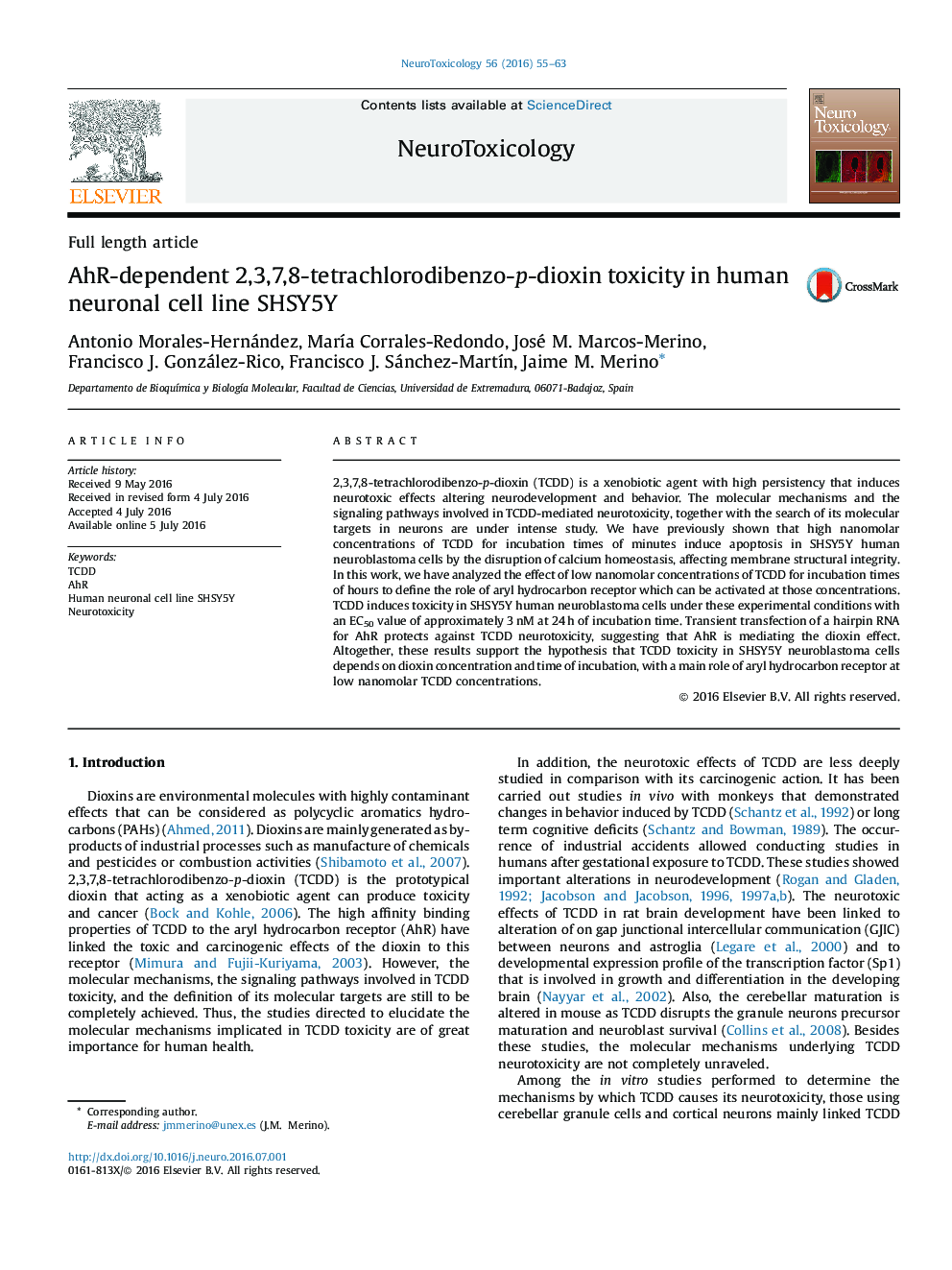| Article ID | Journal | Published Year | Pages | File Type |
|---|---|---|---|---|
| 2589413 | NeuroToxicology | 2016 | 9 Pages |
•TCDD induces toxicity in SHSY5Y human neuroblastoma cells.•TCDD toxicity in SHSY5Y neuroblastoma cells depends on dioxin concentration and time of incubation.•Transient transfection of a hairpin RNA for AhR protects against TCDD neurotoxicity.
2,3,7,8-tetrachlorodibenzo-p-dioxin (TCDD) is a xenobiotic agent with high persistency that induces neurotoxic effects altering neurodevelopment and behavior. The molecular mechanisms and the signaling pathways involved in TCDD-mediated neurotoxicity, together with the search of its molecular targets in neurons are under intense study. We have previously shown that high nanomolar concentrations of TCDD for incubation times of minutes induce apoptosis in SHSY5Y human neuroblastoma cells by the disruption of calcium homeostasis, affecting membrane structural integrity. In this work, we have analyzed the effect of low nanomolar concentrations of TCDD for incubation times of hours to define the role of aryl hydrocarbon receptor which can be activated at those concentrations. TCDD induces toxicity in SHSY5Y human neuroblastoma cells under these experimental conditions with an EC50 value of approximately 3 nM at 24 h of incubation time. Transient transfection of a hairpin RNA for AhR protects against TCDD neurotoxicity, suggesting that AhR is mediating the dioxin effect. Altogether, these results support the hypothesis that TCDD toxicity in SHSY5Y neuroblastoma cells depends on dioxin concentration and time of incubation, with a main role of aryl hydrocarbon receptor at low nanomolar TCDD concentrations.
